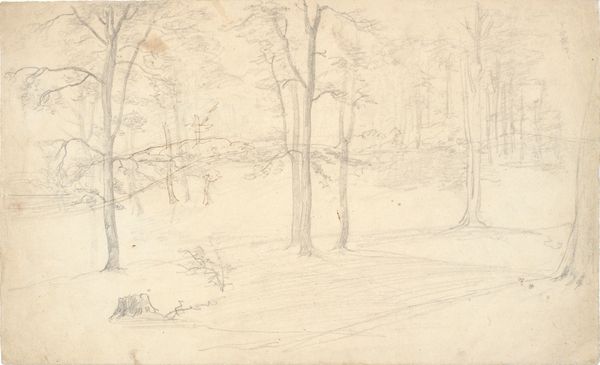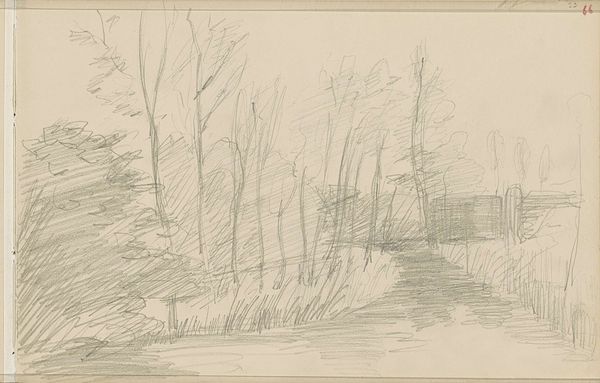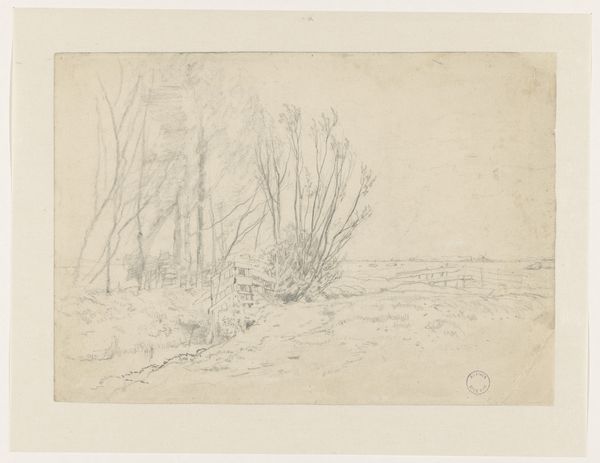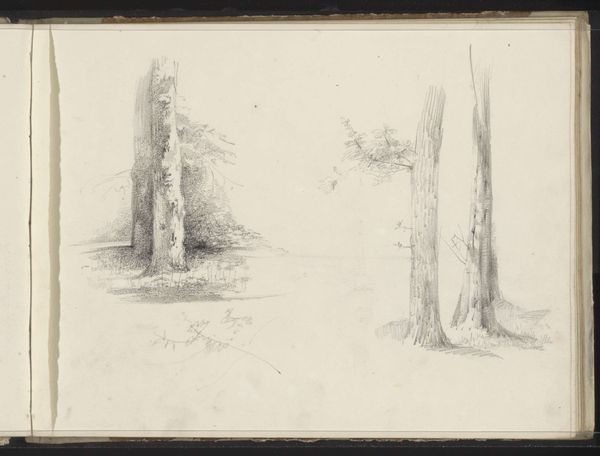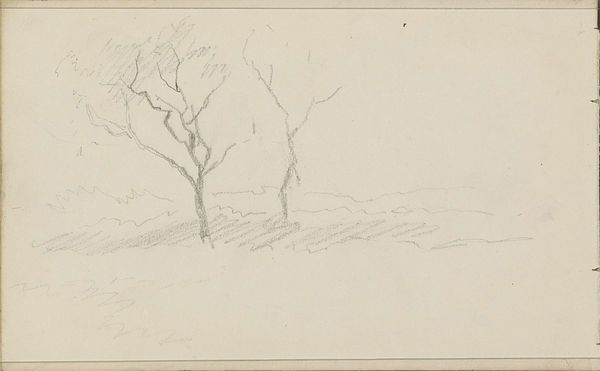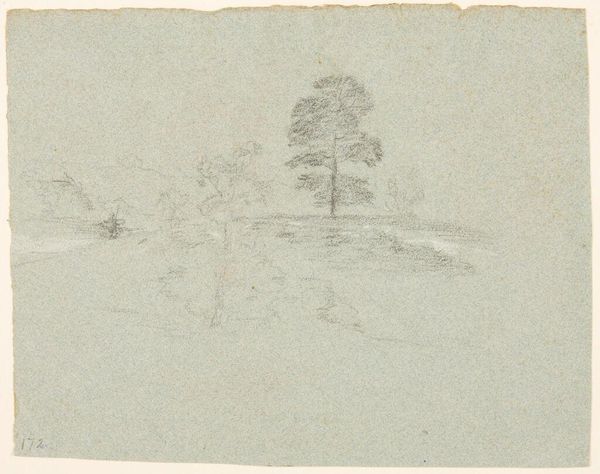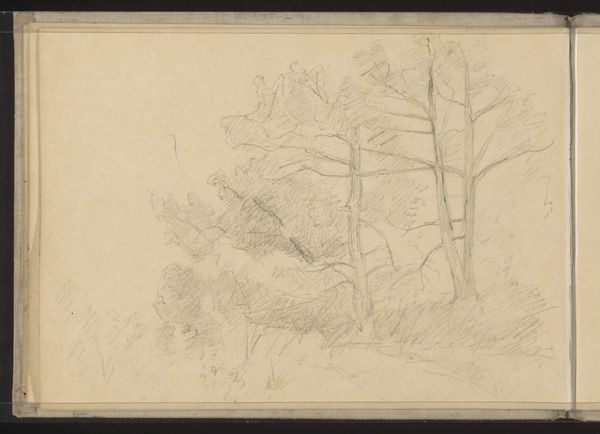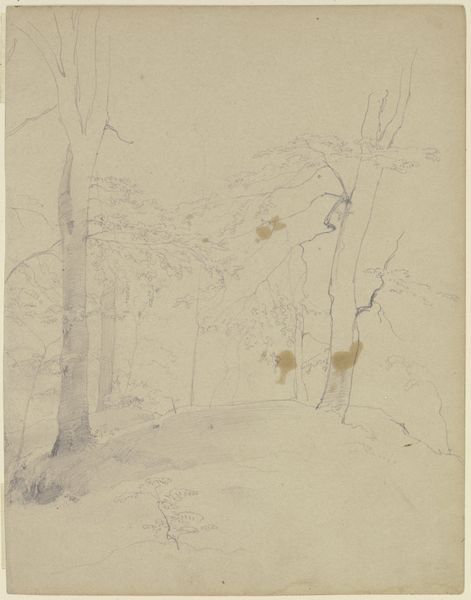
drawing, paper, pencil
#
drawing
#
impressionism
#
pencil sketch
#
landscape
#
paper
#
pencil
#
realism
Copyright: Rijks Museum: Open Domain
Editor: So here we have "Landscape with Trees" by Anton Mauve, likely from sometime between 1848 and 1888. It’s a pencil drawing on paper, and it strikes me as incredibly simple, almost bare. What's your take on this piece? Curator: Well, let's think about the 'stuff' of this drawing. It’s 'just' pencil on paper. But think about the availability and cost of paper in the mid-19th century. It wasn't quite mass-produced like today. Who had access to it? Who controlled the means of making images like this? Editor: That’s a good point. It wasn't like anyone could just pick up a sketchpad at the local store. Curator: Exactly. The perceived simplicity might actually belie a certain level of access and privilege on the artist’s part. Pencil, likewise. The quality, the lead... Were these materials readily available, or signs of specialized knowledge and access to specific vendors? How did this ease of making change art production? Editor: I hadn’t really thought about that. The very act of sketching becomes loaded, right? Not just a casual pastime. Curator: Precisely. And even the act of representing landscape. Was it intended as a study, or was it supposed to represent something else? Think of industrial expansion at the time. This landscape could be interpreted as commentary on how labour and industry relate to nature. Is it resisting that? Accepting it? Ignoring it? Editor: So it is also saying something by not including industrialization. A comment through omission? Curator: Indeed. And consider who purchased and viewed works like this at the time. Were they part of the land-owning class, who then held a clear interest in controlling depictions of the land itself? How does this potentially commodify the land, and make it available for consumption in other forms? Editor: Wow, there's so much more to it than just trees on paper! It’s amazing how even a simple drawing like this reflects those historical structures of power and production. Curator: Precisely! Looking at materials and means can lead us to that insight.
Comments
No comments
Be the first to comment and join the conversation on the ultimate creative platform.

